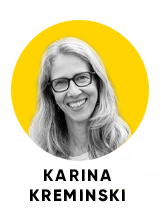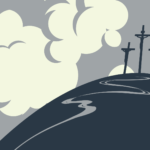The tension between incidentality and intentionality
I’m not sure what I want to be when I grow up” said my 14 year old niece as we drove back from a day in the mountains. I tried to think back to my teenage years and when it was that I started to think about a career, a job and my future. I wondered how long people have been asking children that question. And I wondered why we feel it is so important to know. “What do you want to be when you grow up?” Why would a child of 14 years have any idea what they want to be when they are older?
Especially when “be” is atomised to mean career or profession rather than qualities – like kind, brave or generous.
Our culture drives us towards grasping for certainty and intentional formation. We monitor each other’s lives and encourage one another to climb towards some kind of goal that we imagine is worthy of society’s respect. This impulse makes us feel in control over things that in reality lie beyond our control. How do we become people who rest in what is rather than anxious thinking about what the future should be?
“You have plenty of time to think about that.” I replied to my niece. But she still looked a little concerned; it was perhaps not the answer she wanted to hear. Society is already forming her into a person that needs to have answers and a ready-made plan for her future. “It’s ok to not be sure.” I offered feebly. Again, not an answer that will bring comfort in a culture that is obsessed with intentionality and control.
I went to an exhibition called Codes of the Bouquet recently by Lucienne Fontannaz at the Garden Gallery at the Royal Botanic Garden in Sydney. The works attempt to convey the “codes” that lie inherent in the gift of a bouquet – bouquets of flowers are given for many reasons. The individual canvases have layers of paint and layers of meaning highlighting the complexities within the simple act of giving flowers.
When I was talking to Fontannaz about her rich work she mentioned to me that with some of the paintings she accidentally dribbled or dropped paint on the canvases. Instead of wiping those “mistakes” and “accidents” away, she decided to leave them there. As she worked on the canvas she waited and watched. When she did that she found something was emerging from these “accidents” and they began to take on a life of their own. She became more and more curious about what was happening. Ultimately, many of the pieces turned into expressions of something that she had not envisaged or imagined.
It reminded me of writing. Often I imagine what a character will be, what they will do, what they will think and what their destiny is. But in the process of writing that character takes on a life of its own and I can be surprised that the character becomes quite a different being from what I initially intended. What I originally intended somehow does not fit with who the character is becoming as I write and flesh out the character. I’m always surprised – and delighted – when this happens. (Sometimes the creative process is like this – creativity can come “from the outside” rather than from within; it is in a sense beyond my control even though I am the author and therefore “god-like” with respect to my characters on the page.)
I love this tension between intentionality and incidentality.
I wonder how we can learn this ourselves and teach our children. Intentional formation is inevitable and so is control and certainty. We will always have the inclination to ask an unassuming child “What do you want to be when you grow up?” But how do we support them in the mess, accidents and mistakes helping them to see see all of this as part of the adventure of life? How do we encourage play, patience and an explorer’s attitude rather than a managerial approach to life? As an artist does, how do we watch and wait patiently with curiosity for what is emerging before us rather than dictating the outcome?
I’ve been reading the wonderful Gutsy Girls by Josie McSkimming who was my counsellor several years ago. She told me then she was writing a book about her poet sister Dorothy Porter and I marvelled at Josie’s tenacity. I’m so glad she wrote this book. It is a beautiful read. She writes in the first chapter about her parents leaving her and her sister to their own devices rather than “interfering with adult interpretation and advice”. She contrasts this to “helicopter parenting” which smothers children and their creativity. Nadine Gordimer the South African writer called this style of parenting – leaving children to their own world- “benign neglect”. Dorothy Porter said “Thankfully (my parents) left me alone..It’s horrible to force kids to be creative.” Josie writes, “And of course, it never works anyway.”
I imagine that leaving kids “in their own world” to play and experiment would be a way to nurture adventure, creativity and an open-handedness to life. “Benign neglect” may not be the best way to describe it and taken to full expression it could be damaging of course – though I do warm to the naughtiness of the political incorrectness within the expression. However the practice of leaving children and adults to work things out for themselves, without imposing a framework, expectations and a precise plan for life will help us all to encounter the surprises in life – and those surprises might shape and form us in delightful ways that we did not expect. Like the characters in a book, the process of becoming happens sometimes magically “from the outside” and is out of our control. This is the creative or creation process; becoming who we are.

I’m hoping next time I say to my niece “It’s ok to not be sure” when she is ambivalent about her future, there will be a quiet confidence in her smile as she realises that yes, it is in fact perfectly ok.
Rev. Dr Karina Kreminski, Mission Catalyst – Formation and Fresh Expressions, Uniting Mission and Education. Karina also blogs and this article is reprinted with permission from This Wild and Precious Life.












